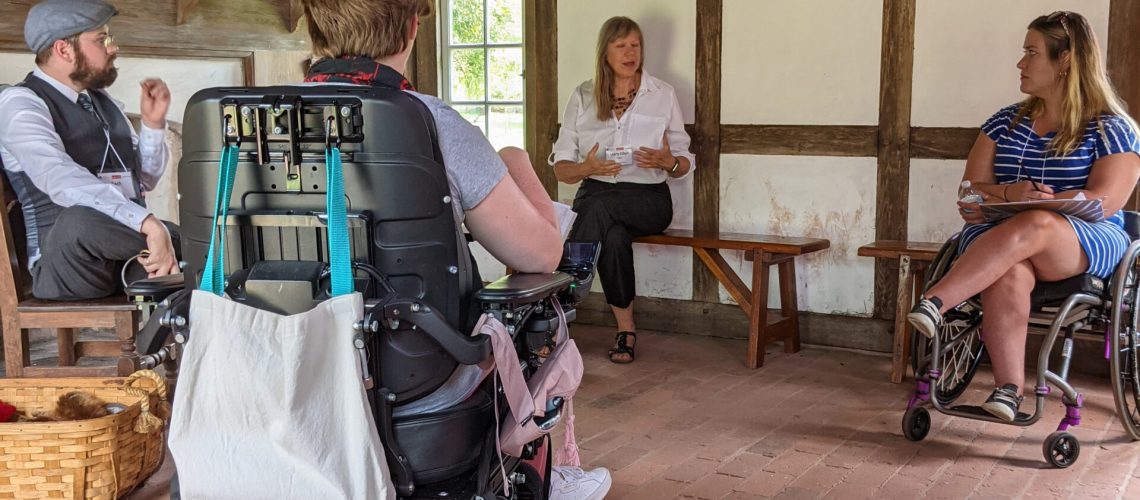Over the past few months, we have been working with the sites and museums in the Pennsylvania Bureau of Historic Sites and Museums (BHSM) as they develop new accessibility plans using our Action Planning Template. This gave the Accessibility Excellence project team more feedback on the template’s usability and helped BHSM leadership better understand its historic sites’ priorities.
In this post, we’ll share more about lessons learned from this process and what sites have prioritized in their planning. This phase of the project took place from March-August 2023 and involved meetings between the Project Manager and staff at BHSM’s 13 administered sites and 7 partner properties. Site Administrators and staff completed two Action Plans. Short-Term plans included projects for the fiscal year from June 2023 through July 2024; Long-Range plans focused on the next 3-5 years.
Increasing physical access to buildings was part of almost every plan. The category that came up the most was improvements to site pathways and physical access to exhibits. This included researching alternative outdoor pathway materials and repairing gaps or uneven spots that could cause trip or tip hazards on stone or brick paths. Building or landscape construction is managed by a separate Commonwealth bureau, which can lengthen completion timelines on these projects. BHSM leadership decided to prioritize these building and landscape improvements in the current fiscal year, working closely with sites and the relevant parties to ensure that more of these projects move forward.
Sites with historic buildings responded to these challenges by developing some creative solutions to provide programmatic access to areas or buildings that are not accessible. One site is currently developing virtual tours that will allow visitors to follow tour guides via Zoom on a cell phone or tablet. If successful, other sites would then imitate this type of alternative access. Three sites identified golf carts as a tool to provide access to buildings and site features where pathways are long or steep. Adding golf carts will require research about liability for drivers, storage/maintenance, and transferring wheelchair users into the golf cart.
Many sites expressed an interest in researching and sharing more inclusive perspectives in exhibit content, particularly those of Indigenous and enslaved people. To help engage visitors with low vision, some sites proposed adding tactile elements to exhibits (for example, a touchable map to show troop locations on a battlefield). Adding verbal description to tours is also an opportunity for professional development where educators and volunteers across sites can learn new skills and support integrating description into their tours.
The project team learned a lot about how sites went through the Action Planning process. In particular, they liked how the Template was easily modifiable. We heard that the fields on the spreadsheet prompted staff to think about things that they might not have otherwise considered in the early stages of a project, like community partners and evaluation. Staff also shared that the template worked well within their existing project planning processes. Some even color-coded projects in the spreadsheet according to their status. While some staff shared concerns the Template felt like an additional layer of paperwork in their already heavy workload, they liked that it was a living document that they can update as work progresses.
If you’ve used the Action Planning Template at your museum and want to share your feedback with us, please complete our survey!
Read more Accessibility Excellence blog posts
Return to the Accessibility Excellence Project

